Explanation of Mimine Shrine, the best spot in Chichibu
“AnoHana,” “Kokosake,” “SoraAoi,” and “WataTen” Sacred Sites
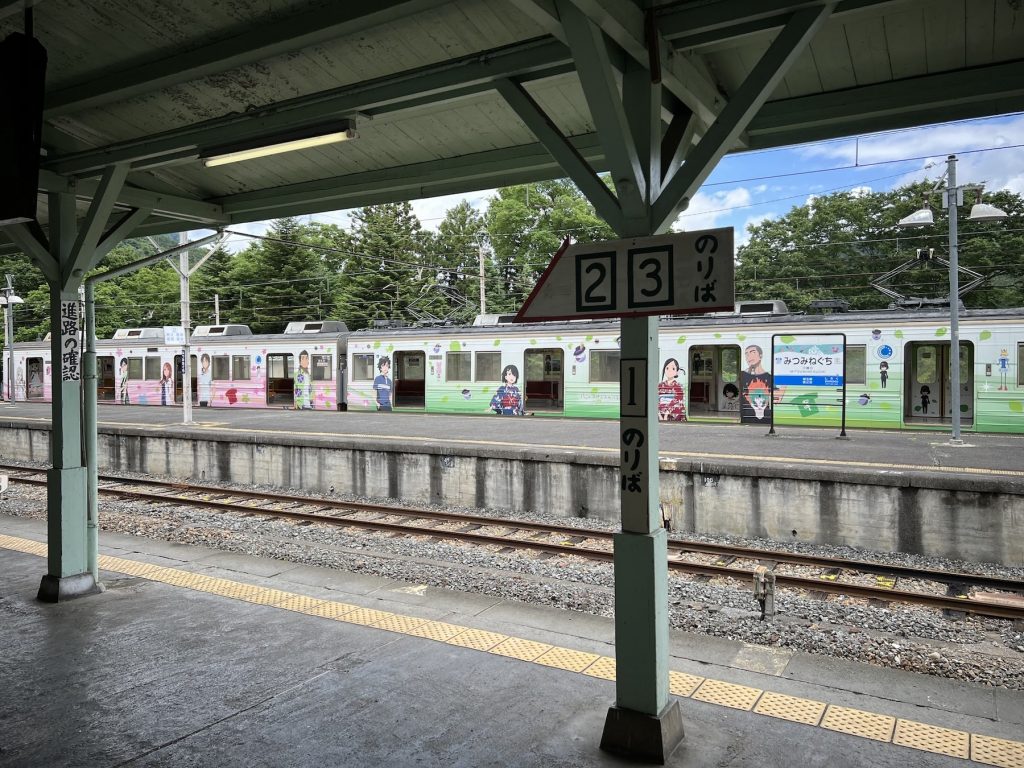
Chichibu, which has been famous as the sacred site of “AnoHana” since 2011, has finally regained its calm.
Although it still hosts events for other popular anime like “Kokosake” and “WataTen,” it doesn’t reach the fever pitch of the “AnoHana” era.
Nevertheless, anime-related events are held every year, and you can spot anime elements even on regular sightseeing trips.
As an anime fan, it’s exciting to see these, even if you can’t stare too openly in public.
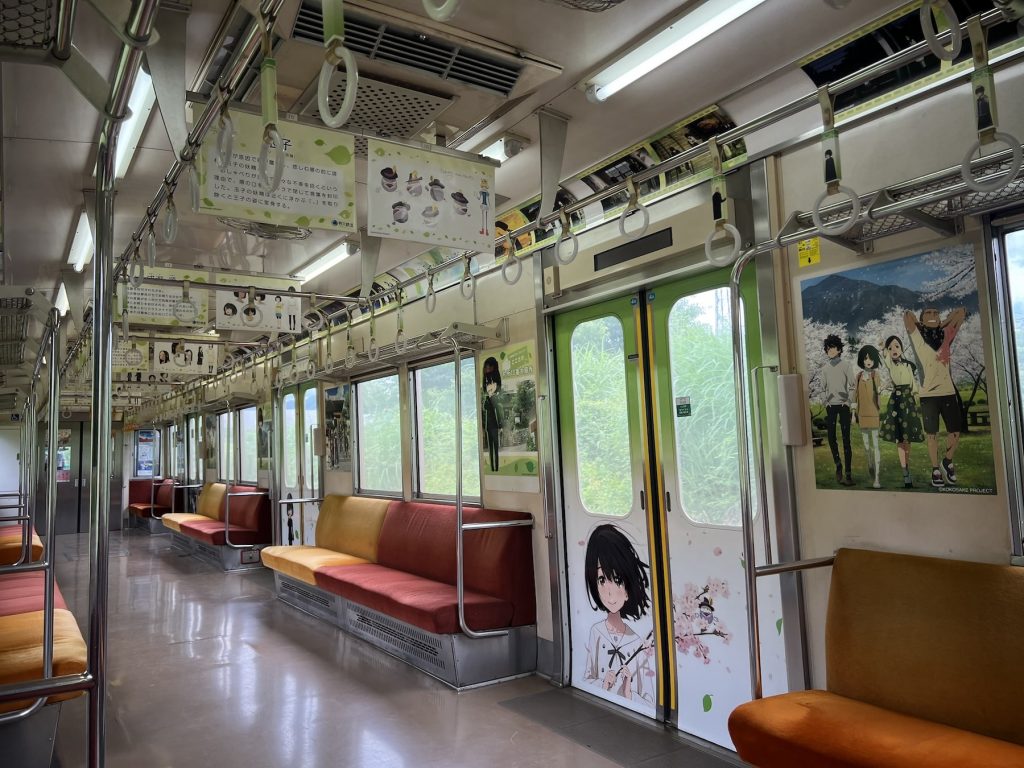

However, the best place I’ve visited in Chichibu so far is Mitsumine Shrine.
Whether you’re there for nostalgic anime pilgrimages, hunting for limited edition Ichiro’s Malt, or touring on a bike, I highly recommend visiting this shrine.
A Brief Explanation of Mitsumine Shrine, 2.5 Hours from Ikebukuro
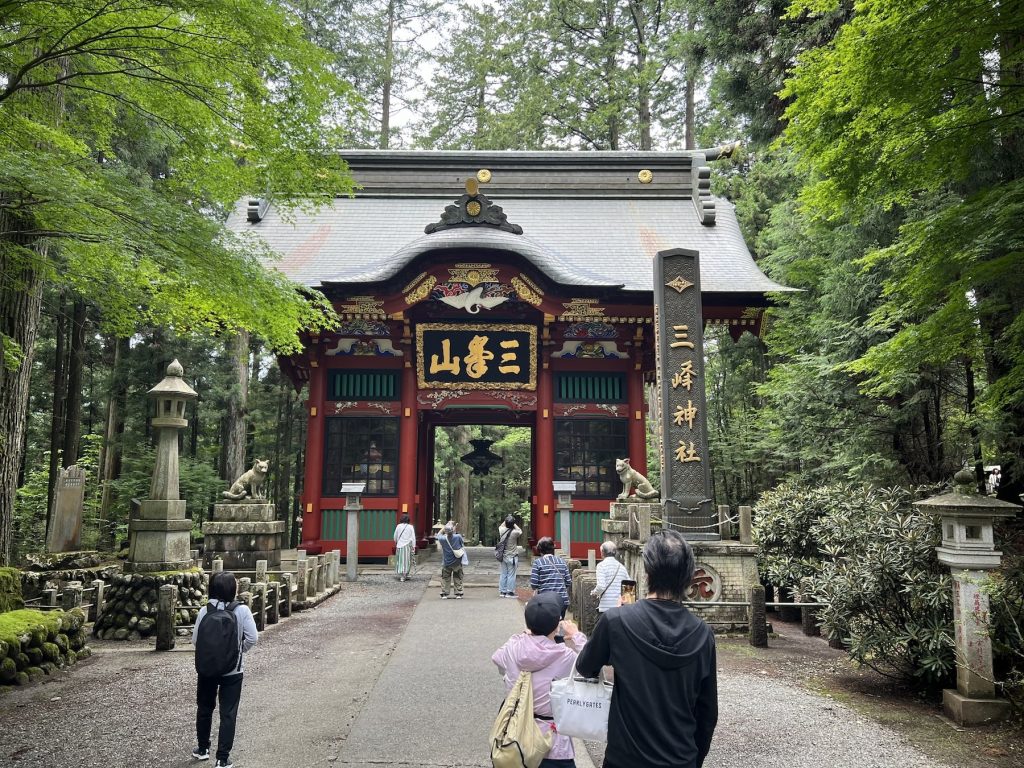
Mitsumine Shrine is said to have begun when Yamato Takeru No Mikoto enshrined the deities Izanagi no Mikoto and Izanami no Mikoto.
Yamato Takeru no Mikoto is a prince who appears in ancient Japanese texts like the Kojiki and Nihon Shoki.

Yamato Takeru no Mikoto, the child of Emperor Keiko, the 12th Emperor (the current emperor is the 126th), was born over 1900 years ago (according to some theories).
He is famous for being sent east and west to suppress rebellious forces, achieving notable results.
The shrine started with Yamato Takeru no Mikoto, who is often worshipped as a deity in Japan, enshrining deities himself.
Later, En no Ozunu, the founder of Shugendo, is said to have practiced in the mountains around Mitsumine.
He was a key figure around the 7th century.

Additionally, it is said that Kobo Daishi Kukai enshrined a Kannon statue at Mitsumine Shrine.
Mitsumine Shrine has long been a popular power spot among Kamakura samurai and Edo citizens.
The shrine is divided into the main shrine and the inner shrine. The main shrine (at an altitude of 1102m) can be reached by bus, while the inner shrine is at the mountain summit (altitude of 1332m) and requires climbing a mountain trail.
Why Mitsumine Shrine is Amazing
One of the Premier Power Spots in the Kanto Region
- Located at an altitude of 1,102 meters, offering spectacular views
- Originates from 1900 years ago, with nature that even impressed Yamato Takeru no Mikoto
- Historically treated as a sacred site and a place for ascetic practices

From the bus stop to the main shrine, the view is already spectacular.
If you’re lucky, you might see a sea of clouds.
The scenery alone refreshes your mood and gives you a sense of power.

Then, heading to the main shrine.
Seeing Yamato Takeru no Mikoto, a mythical figure known to every Japanese, in the shrine’s history is deeply moving.
The fact that it’s been a power spot since ancient times, with connections to figures like En no Ozunu and Kukai, certainly adds to its mystical feel.
A Moderate Hike to the Inner Shrine
- The inner shrine is at the summit of Mt. Myohogatake (1332m), offering a light hiking course from the main shrine
- If you take the bus to the main shrine, it’s a 200m altitude difference and 2.5km to the top
- A pleasant hike, feeling nature and getting some light exercise
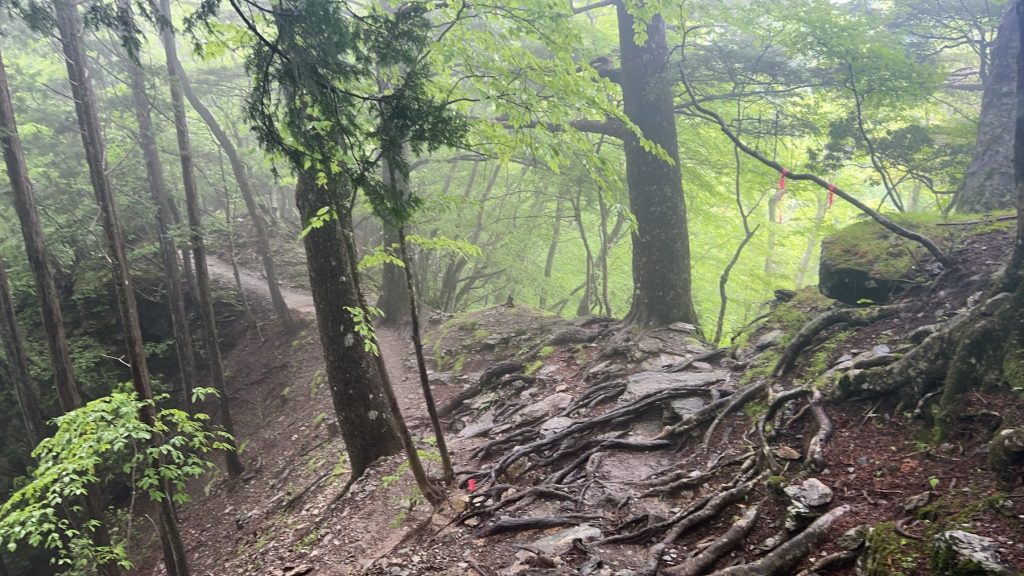
For middle-aged folks who want to hike but are worried about their stamina, the path to Mitsumine Shrine’s inner shrine is perfect.
It takes 2.5 hours round trip, with a moderate difficulty that’s not too easy or too hard.
For adults without an exercise habit, it might be somewhat tough but manageable.
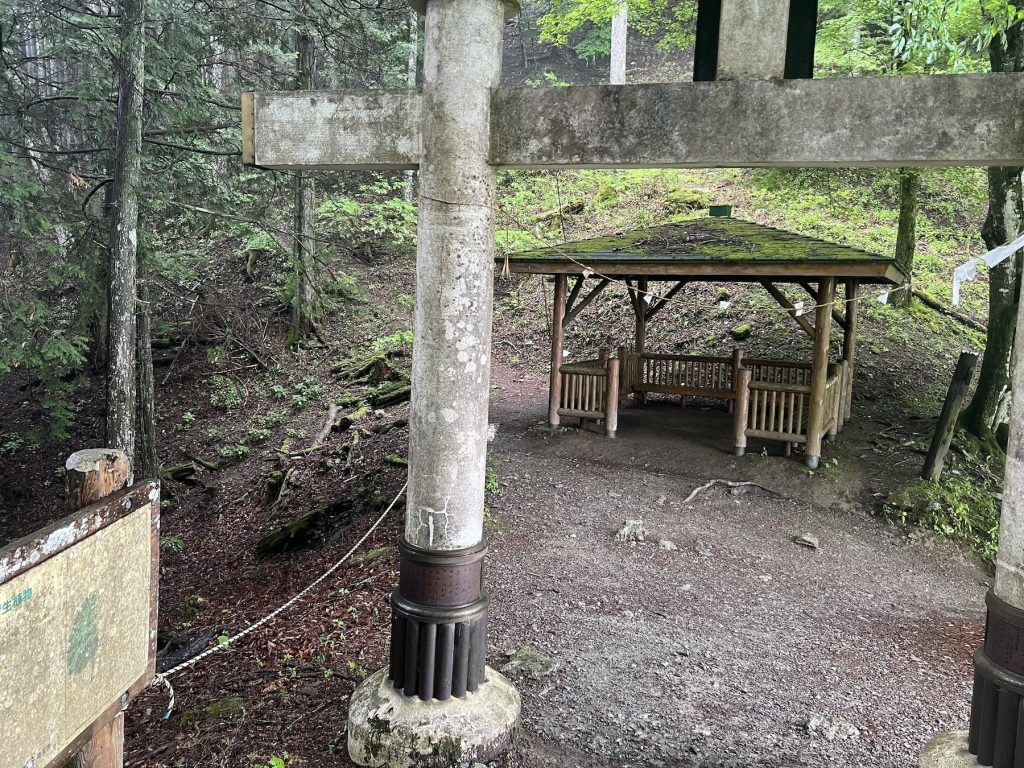
Exercise in the great nature over 1000 meters above sea level is refreshing.
Just before the summit, you’ll need to climb rocks with chains, which adds to the excitement!
The Inner Shrine is Truly Impressive
- The scenery that impressed Yamato Takeru no Mikoto should be close to what you see
- The view from the summit is amazing
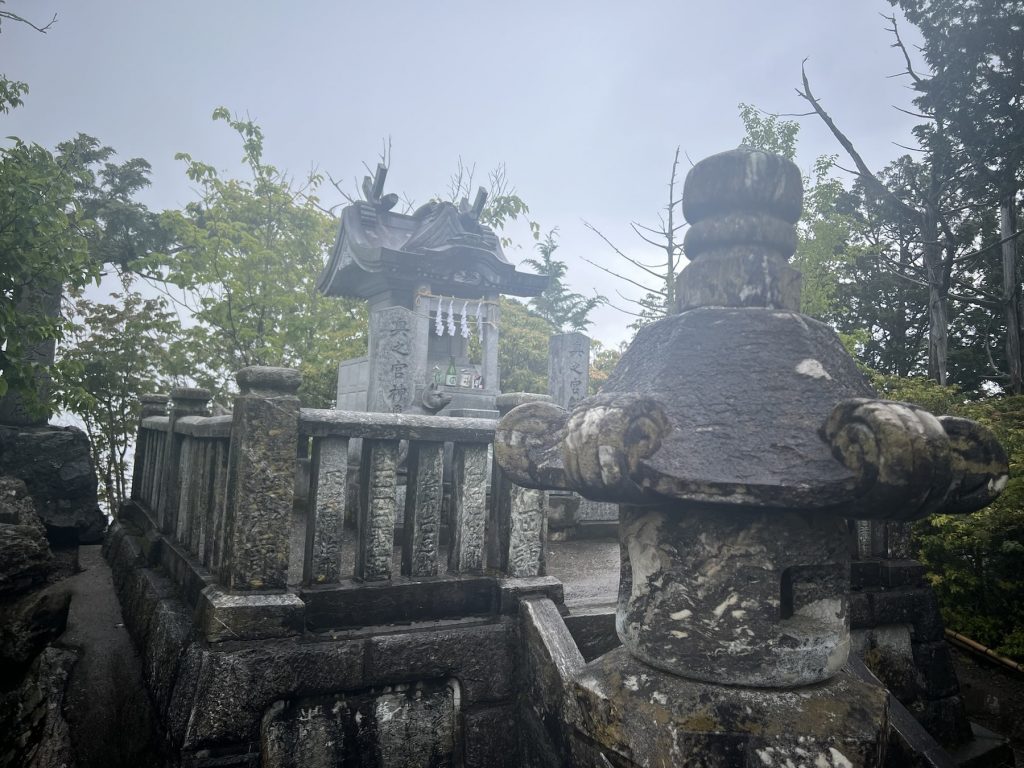
The sacred view from the 1332m summit.
According to history, Yamato Takeru no Mikoto climbed the three peaks of Mitsumine (including Myohogatake), so the inner shrine’s location should be close to what he saw.

It feels like a divine space, where you can understand why a shrine was built here.
A Manageable Distance Even for Beginners on a Trip
- You can explore thoroughly in a day
- The Chichibu area has many other tourist spots, making it easy to adjust your schedule
It takes about 3 hours from Ikebukuro to get there, so you can make a day trip to visit just Mitsumine Shrine.
However, a day trip can feel rushed, so it’s better to stay overnight and combine it with other sightseeing.
The Chichibu area has many tourist attractions, so combining it with other spots is recommended.
This time, I visited over two nights and three days with the goal of leisurely visiting the three shrines in Chichibu.
There are many tourist resources to adjust to, such as temples, local cuisine, and hot springs, so a relaxed schedule felt just right.
Points to Note
- The path to the inner shrine is a proper mountain trail, so at least wear comfortable clothes and shoes
- As a popular power spot, it gets crowded on holidays and long weekends
- The trail to the inner shrine is open only during the climbing season
- Buses to Mitsumine Shrine are infrequent, so check the timetable if you’re going by bus
Although highly recommended, the visit to the inner shrine can be risky despite the short distance.
There are parts where the path is less than 1 meter wide, making a fall potentially dangerous, so avoid wearing unsuitable clothing.
Also, it’s a popular power spot, so crowds can be an issue.
The bus on holidays might be a concern since it’s a long mountain road ride.
It’s best to visit on a weekday when it’s less crowded.

About the Schedule
Since it was my first visit, I made some scheduling mistakes. I’ll leave some schedule ideas as a reminder for next time.
Sample Schedule (Morning Visit to the Inner Shrine)
*Based on the bus schedule for a holiday in June 2024*
The last bus leaves at 16:30, so:
8:30 – Take the bus from Seibu-Chichibu
9:50 – Arrive at Mitsumine Shrine
10:00 – Start the main shrine visit
10:45 – Museum visit
11:30 – Lunch at the restaurant next to Mitsumine Shrine
12:30 – Depart for the inner shrine
13:45 – Arrive at the inner shrine
14:00 – Depart from the inner shrine
15:00 – Arrive back at the main shrine
15:15 – Get the Goshuin (shrine stamp)
15:30 – Take the return bus
16:50 – Arrive at Seibu-Chichibu station
17:00 – Refresh at the hot springs in front of Seibu-Chichibu station
My Schedule Record (Weekday)
- The visit to the main shrine was too short, could have spent another 20 minutes
- The museum was more interesting than expected, could have spent more time there
- The walk around the main shrine was quite extensive, needed a break
10:25 – Take the bus from Mitsumineguchi
11:20 – Arrive at Mitsumine Shrine
11:30 – Start the main shrine visit
11:45 – Depart for the inner shrine
12:40 – Arrive at the inner shrine
12:45 – Depart from the inner shrine
13:45 – Arrive back at the main shrine
13:50 – Museum visit
(Skipped lunch due to awkward timing)
(Forgot to get the Goshuin)
14:30 – Take the return bus
15:50 – Arrive at Seibu-Chichibu station
16:30 – Check-in at the accommodation
Other Must-See Spots
The Adjacent Museum Exceeded Expectations
At least when I visited, I was the only visitor. I entered out of boredom, but it was unexpectedly lavish.
The exhibits include Buddhist statues and scriptures from the syncretism of Shinto and Buddhism, displays related to wolf worship including a taxidermy Japanese wolf, and exhibits related to the Chichibu-no-Miya family.
Since photography is not allowed, I don’t have any images, but if you have time while waiting for the bus, be sure to visit. It’s only a few hundred yen to enter.
Personally, I enjoyed the mandala and the Japanese wolf fur displays.
The Amulets are Popular
Mitsumine Shrine’s amulets are popular. The “White Ki-mamori” amulet, which was previously only sold on the 1st of each month, is no longer available, but other colors are still sold.
Mitsumine Shrine is one of the three Chichibu shrines, and the amulet from another of the three, Hodosan Shrine, the “Treasure Amulet,” pairs well with it, making it a must-have for amulet enthusiasts.
You Can Touch the Sacred Tree
There is even a platform in front of the main shrine specifically to touch the sacred tree. Touch it to receive its power.

